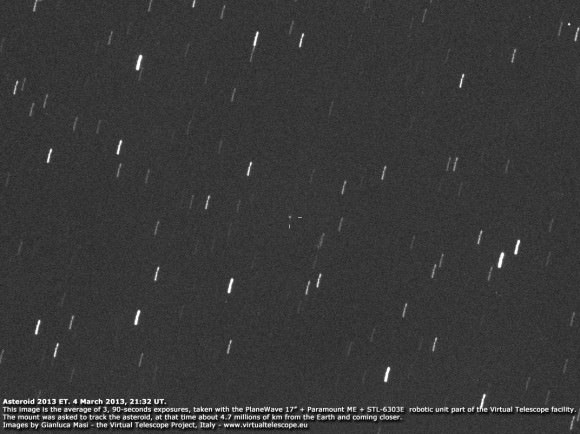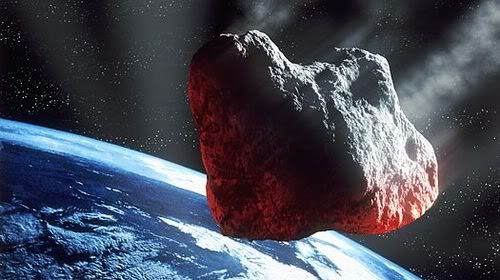Be careful where you get your news. Some websites have headlines that are screaming “GIANT ASTEROID HEADING TO EARTH!” or “2014 END OF THE WORLD!” It’s been billed as the largest threat to Earth in a millennium, and this supposed nearly 300 meter (1,000 ft.) -wide asteroid is spurring “urgent meetings going on among scientists on how deflect it.”
This asteroid can’t hit Earth because it doesn’t exist. Or at the very least, it doesn’t exist yet. The first clue this asteroid is a fake is its name: 2014 AZ5. Asteroids are named for the year they are discovered, and since it is only 2013…. well, you see the issue.
Additionally, this asteroid isn’t listed on JPL’s Small Body Database, or the Minor Planet Center’s website, the official places where all known asteroids are listed. As much as some people like to think there are conspiracies and government cover-ups, absolutely every asteroid that’s ever been detected is listed on these sites.
There is, actually, another asteroid that will be whizzing by Earth this week at a very safe distance of about 950,000 km. On March 9, Asteroid 2013 ET, a very large 100 meter-wide rock will make its closest approach. Gianluca Masi from the Virtual Telescope project will host a webcast from the Virtual Telescope robotic facility in Italy on March 8, 2013 at 19:00 UT (2 pm EST). You can watch for free on their website. “It is worth to underline that there are NO risks at all of collision,” Masi said.
Here’s an image of 2013 ET that Masi took on March 4, 2013:

Hat tip: Ian Musgrave.


typo alert 🙂
” The first clue this asteroid is a fake is its name: 2013 AZ5. Asteroids
are named for the year they are discovered, and since it is only 2013….
well, you see the issue. ”
Read more: http://www.universetoday.com/100570/2014-az5-the-fake-asteroid-that-wont-hit-earth/#ixzz2MrvbTt5V
“The first clue this asteroid is a fake is its name: 2013 AZ5”. Um, surely you mean 2014?
Looking up nomenclature, I gather that 2013 A* would have had to have been the 130th minor planet discovered 1-15 January 2013. I used the links and founc there was no 2013 AZ5, but there was 2013 AZ118?! So I have no idea what’s going.
wait… From the article: “fake is its name: 2013 AZ5. Asteroids are named for the year they are discovered, and since it is only 2013”
But it is 2013!!!
Also 1000 feet = 300m, not 3k meters
Oh no, the author typed “2013 AZ5” instead of “2014 AZ5.” It must really be the end of the world!
So many people say the error, and it has now been corrected. An honest mistake by the authour. 🙂
Good… maybe I can recycle that flyer I made for our last music party? aka… “It’s the end of the end of the world party!” Only now it’s definitely the end of the end of the world! At least for fear mongers and sensationalistically inclined! “The end of the end of the world party.. Mk II?” How long will this go on? Until the end of time?
Well atleast its going to be a long PARTY and i love parties
All
this recent asteroid business reminds me of this novel I just read
called THE MYOSHI EFFECT which is about an asteroid headed toward earth
and how everybody reacts and the government tries to find a way to
deflect it. Granted the novel is humorous, like Dr Strangelove or
Douglas Adams or something, but how we just reacted to these last 2
space rocks is almost taken from the pages of the book. Fiction and fact
are fast becoming one.
Remember this asteroid’s name “Wormwood” it’s coming soon!